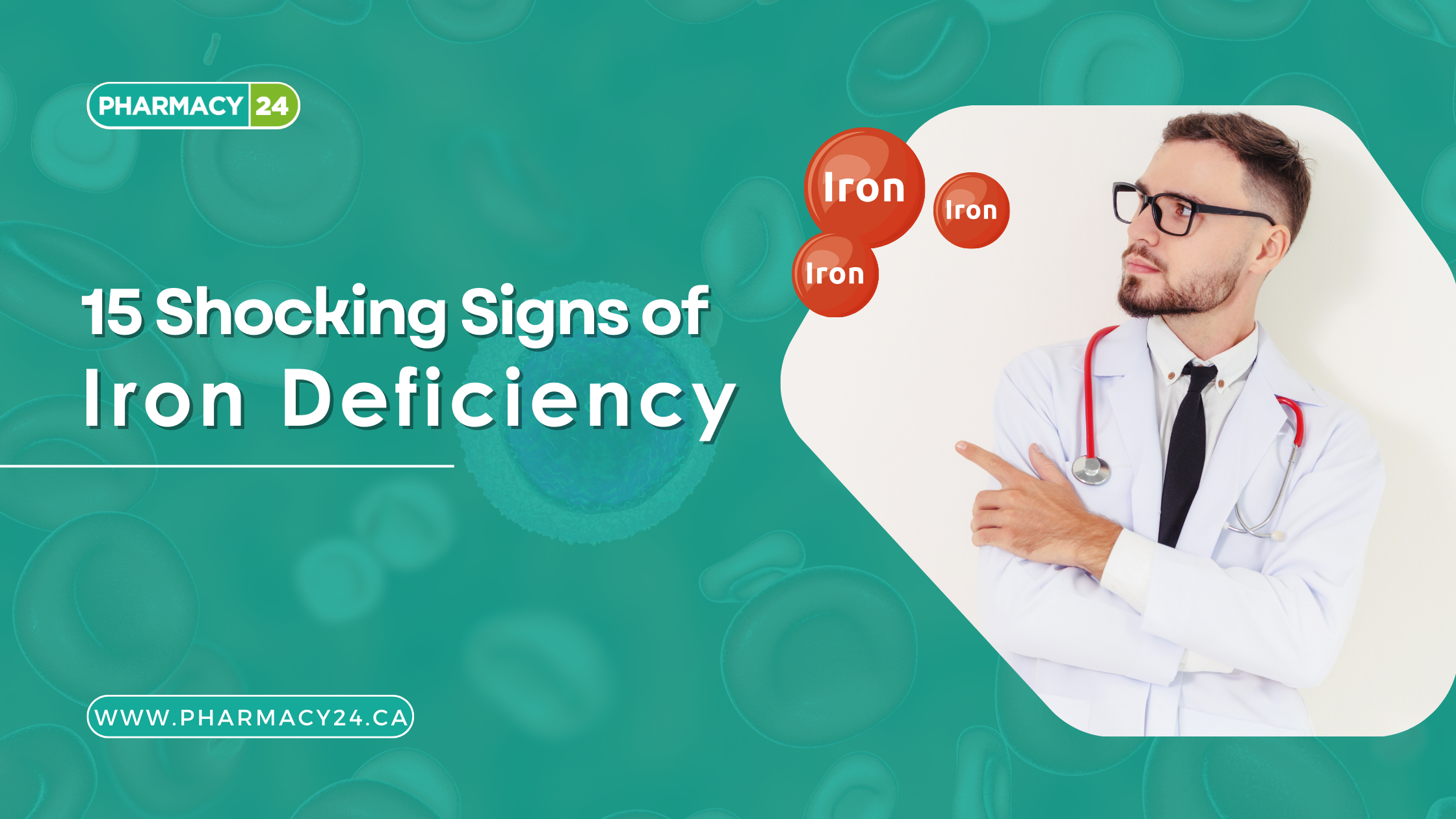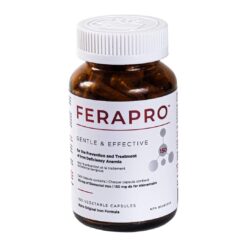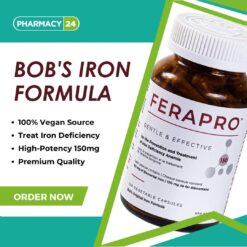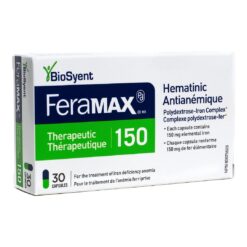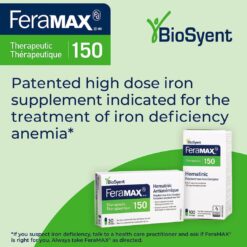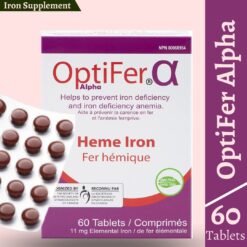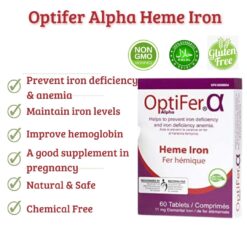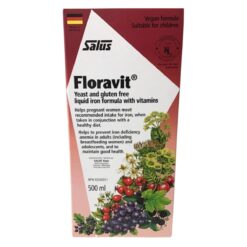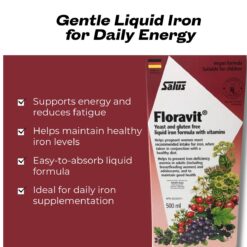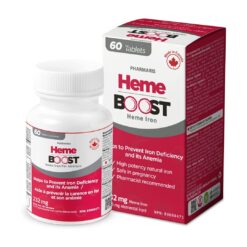Iron deficiency is a common health issue that affects millions of people worldwide.
It occurs when the body doesn’t have enough of the mineral iron, leading to decreased production of red blood cells.
This article will delve into the 15 signs indicating you are iron deficient.
Key Takeaways:
- Iron deficiency can lead to anemia, a condition characterized by a reduced number of red blood cells.
- Recognizing the signs of iron deficiency is crucial for timely diagnosis and treatment.
- Iron-rich foods and supplements can help address the deficiency.

Tired of Feeling Tired? Try One of These Top 5 Iron Supplements
|
Buy Now |
|
Buy Now |
|
Buy Now |
|
Buy Now |
|
Buy Now |
15 Signs You Are Iron Deficient
Iron is an essential mineral that plays a vital role in producing hemoglobin, a protein in red blood cells that carries oxygen from the lungs to the rest of the body.
When the body lacks sufficient iron, it can lead to iron deficiency anemia, a condition where it doesn’t produce enough red blood cells to meet its needs.
1. Fatigue and Weakness
Fatigue is one of the most common symptoms of iron deficiency. Iron plays a pivotal role in energy production.
When the body lacks sufficient iron, it results in decreased oxygen supply to muscles and the brain, leading to persistent tiredness and a feeling of weakness. Source
2. Difficulty in Concentration
Iron plays a crucial role in cognitive functions and neurotransmitter synthesis.
A deficiency can lead to decreased oxygen supply to the brain, affecting its ability to process information efficiently.
This can manifest as difficulty in concentrating, memory lapses, and a general feeling of being in a fog.
3. Shortness of Breath
Iron is essential for hemoglobin production, which carries oxygen to body tissues.
A deficiency can reduce oxygen supply, causing shortness of breath, especially during physical exertion. Source
4. Dizziness or Lightheadedness
Insufficient oxygen supply to the brain, due to reduced hemoglobin, can lead to feelings of dizziness or lightheadedness.
This symptom can be more pronounced when standing up from a sitting or lying position.
5. Headaches
Reduced oxygen levels in the brain can lead to headaches.
The body might try to compensate for the lack of oxygen by increasing blood flow to the brain, causing pressure and resulting in headaches.
6. Dry and Damaged Hair and Skin
Iron plays a role in maintaining healthy hair and skin.
A deficiency can reduce the supply of oxygenated blood to the hair follicles and skin, leading to dryness, damage, and even hair loss.
7. Swelling and Soreness of the Tongue and Mouth
Iron deficiency can cause the tongue to become swollen, inflamed, or pale.
Additionally, there may be cracks or sores at the corners of the mouth, making eating and speaking painful. Source
8. Brittle Nails
When the body is iron-deficient, it can lead to brittle or spoon-shaped nails.
This is because iron plays a crucial role in the formation of keratin, a protein that strengthens nails.
A lack of iron can weaken this protein, making nails more susceptible to breakage. Source
9. Blue Color to the Whites of the Eyes
A severe iron deficiency can cause the whites of the eyes to take on a bluish tint.
This is due to the reduced amount of oxygen reaching the blood vessels in the eyes, causing them to constrict and appear blue.
10. Desire to Eat Non-Food Items (Pica)
One of the more unusual symptoms of iron deficiency is pica, a craving to eat non-food items like dirt, clay, or chalk.
This behavior is thought to be the body’s way of trying to obtain minerals it’s lacking.
11. Feeling Lightheaded When Standing Up
A sudden drop in blood pressure when standing up, known as orthostatic hypotension, can be a sign of iron deficiency.
This happens because the body struggles to circulate enough oxygen-rich blood. Source
12. Pale Skin Color
Iron deficiency can cause the skin to lose its natural color, making it appear unusually pale.
This is due to the reduced amount of hemoglobin in the blood, which gives blood its red color and, by extension, skin its rosy hue.
13. Shortness of Breath
Even with mild exertion, individuals with iron deficiency might find themselves out of breath.
This is because their bodies can’t supply enough oxygen to the muscles and tissues, leading to shortness of breath.
14. Sore or Inflamed Tongue
A deficiency in iron can lead to a condition called glossitis, where the tongue becomes swollen, and inflamed, and might change color. This can make swallowing and speaking painful.
15. Uncontrolled Movement of Legs (During Sleep)
Restless leg syndrome, a condition where there’s an uncontrollable urge to move the legs, especially during sleep, can be a sign of iron deficiency.
The exact cause is unknown, but iron plays a role in producing dopamine, a neurotransmitter that affects muscle movements. Source
Causes of Iron Deficiency
Iron deficiency can arise from various causes, including:
Dietary Restrictions: Not consuming enough iron-rich foods.
Blood Loss: Conditions like heavy menstrual periods or ulcers can lead to blood loss.
Medical Conditions: Diseases like celiac disease can affect iron absorption.
Pregnancy: Increased blood volume during pregnancy can deplete iron stores.
You must read the complete guide on The 4 Main Causes of Iron Deficiency
Treatment and Prevention
The primary treatment for iron deficiency is iron supplementation, either orally or intravenously.
It’s also essential to address the underlying cause of the deficiency.
Consuming iron-rich foods, like green vegetables and red meat, can help prevent iron deficiency.
You must read the complete guide on the Top 5 Best Iron Supplements of 2024
The Importance of Early Detection
Detecting and treating iron deficiency early can prevent complications and improve quality of life.
Regular check-ups and blood tests can help in early diagnosis.
Frequently Asked Questions (FAQs) about Iron Deficiency
Iron deficiency is a common health concern that can lead to various symptoms and complications if not addressed promptly.
Here are some frequently asked questions about iron deficiency to provide a deeper understanding:
1. What causes iron deficiency anemia?
Iron deficiency anemia is most commonly caused by a lack of iron in your diet, especially during pregnancy.
Heavy menstrual cycles and certain medications can also lead to this condition. In adult men, the most common cause is gastrointestinal bleeding, often due to conditions like ulcers or inflammation.
Other potential causes include certain medications, gastric ulcers, inflammation in the intestine or esophagus, piles, and even colon or stomach cancers. Source
2. Who is at risk for iron deficiency anemia?
Several groups are at a higher risk of developing iron deficiency anemia.
This includes women of reproductive age, pregnant women, individuals with poor diets, regular blood donors, infants and toddlers (especially if born prematurely), vegetarians who don’t consume iron-rich substitutes, teenagers undergoing rapid growth phases, adults over 65, those exposed to environmental lead, and high-performance athletes.
3. How is iron deficiency anemia diagnosed?
Diagnosing iron deficiency anemia involves a combination of a medical history review, physical examination, and blood tests.
A complete blood count (CBC) is typically the first test ordered.
If anemia is detected, further tests to determine iron levels and confirm the diagnosis might be required.
In some cases, additional tests may be ordered to identify the underlying cause of the deficiency.
4. How can one prevent iron deficiency anemia?
Prevention involves consuming a diet rich in iron.
This includes legumes like peas and beans, whole grains, vegetables like spinach and broccoli, protein sources like beef and poultry, and fruits like figs and dates.
Increasing vitamin C intake can also help as it aids in iron absorption. Source
5. What is the treatment for iron deficiency anemia?
Treatment depends on the cause of the deficiency. If it’s due to blood loss from the digestive system, medications or even surgery might be required.
For those with heavy menstrual cycles, hormonal birth control or certain surgeries might be recommended.
If the deficiency is due to dietary reasons, iron supplements, and dietary changes will be the primary treatment methods.
In severe cases, iron or red blood cell transfusions might be necessary.
You must read the complete guide on the Top 5 Best Iron Supplements of 2023
6. Are there any complications associated with iron deficiency anemia?
If left untreated, iron deficiency anemia can lead to various complications, including heart problems.
The heart has to pump more blood to compensate for the reduced oxygen-carrying capacity, which can lead to an enlarged heart or heart failure.
Additionally, pregnant women with untreated iron deficiency anemia are at a higher risk of premature births.
7. Can iron deficiency anemia affect children differently than adults?
Yes, children with iron deficiency anemia might show signs of slow development and behavioral issues.
They might be more prone to infections and might also display unusual eating habits, like consuming non-nutritive substances (pica).
-
Price range: $25.99 through $77.99Buy Now This product has multiple variants. The options may be chosen on the product page
-
Price range: $24.99 through $70.99Buy Now This product has multiple variants. The options may be chosen on the product page
-
Price range: $29.99 through $66.99Buy Now This product has multiple variants. The options may be chosen on the product page
